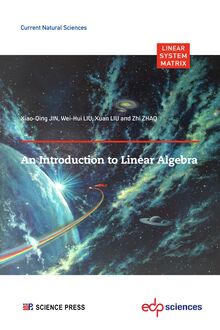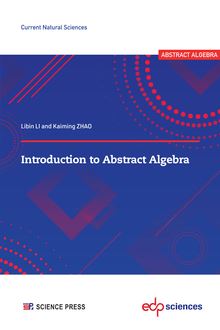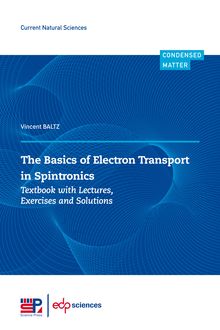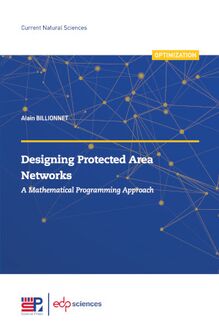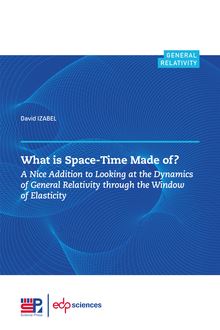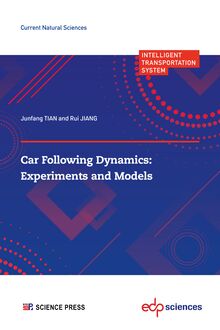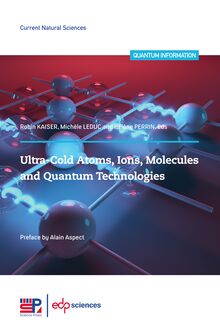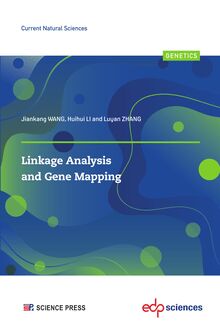Practical PID Handbook , livre ebook
420
pages
English
Ebooks
2022
Obtenez un accès à la bibliothèque pour le consulter en ligne En savoir plus
Découvre YouScribe en t'inscrivant gratuitement
Découvre YouScribe en t'inscrivant gratuitement
420
pages
English
Ebooks
2022
Obtenez un accès à la bibliothèque pour le consulter en ligne En savoir plus
Publié par
Date de parution
17 mars 2022
Nombre de lectures
4
EAN13
9782759826094
Langue
English
Poids de l'ouvrage
71 Mo
A true practical guide, this book brings together all elements necessary for the practice of PID control in industries. The first part presents the different characteristics of the PID controller: continuous, digital, architectures, realization algorithms implementation. The second part describes different adjustment methods that are practiced in the industry, all illustrated with numerous response curves to show their specificities. We will also find elements concerning simple methods, often graphic, to identify the usual processes to be controlled, without identification software. The book is intended to be practical with many summary tables, for immediate use of knowledge with as few calculations as possible. This book is aimed at students wishing to learn the practice of PID control, as well as teachers, engineers and technicians of the profession.
Preamble . . . . . . . . . . . . . . . . . . . . . . . . . . . . . . . . . . . . . . . . . . . . . . . . . . . . . . III
CHAPTER 1
Main Features . . . . . . . . . . . . . . . . . . . . . . . . . . . . . . . . . . . . . . . . . . . . . . . 1
1.1 Context . . . . . . . . . . . . . . . . . . . . . . . . . . . . . . . . . . . . . . . . . . . . . . . 1
1.2 Features . . . . . . . . . . . . . . . . . . . . . . . . . . . . . . . . . . . . . . . . . . . . . . . 2
1.3 PID Actions . . . . . . . . . . . . . . . . . . . . . . . . . . . . . . . . . . . . . . . . . . . . 5
1.3.1 Proportional Action . . . . . . . . . . . . . . . . . . . . . . . . . . . . . . . . . 5
1.3.2 Integral Action . . . . . . . . . . . . . . . . . . . . . . . . . . . . . . . . . . . . . 5
1.3.3 Derivative Action . . . . . . . . . . . . . . . . . . . . . . . . . . . . . . . . . . . 7
1.4 Different Types of PID . . . . . . . . . . . . . . . . . . . . . . . . . . . . . . . . . . . . 9
1.5 Equivalence of PID . . . . . . . . . . . . . . . . . . . . . . . . . . . . . . . . . . . . . . . 17
1.5.1 Mixed ↔ Parallel Conversion . . . . . . . . . . . . . . . . . . . . . . . . . . 19
1.5.2 Mixed ↔ Series Conversions. . . . . . . . . . . . . . . . . . . . . . . . . . . 19
1.5.3 Parallel ↔ Series Conversions . . . . . . . . . . . . . . . . . . . . . . . . . 23
1.5.4 Summary Tables . . . . . . . . . . . . . . . . . . . . . . . . . . . . . . . . . . . 25
1.5.5 Examples . . . . . . . . . . . . . . . . . . . . . . . . . . . . . . . . . . . . . . . . . 29
1.6 PID: Frequency Response . . . . . . . . . . . . . . . . . . . . . . . . . . . . . . . . . . 30
1.6.1 Series PID . . . . . . . . . . . . . . . . . . . . . . . . . . . . . . . . . . . . . . . . 30
1.6.2 Mixed PID . . . . . . . . . . . . . . . . . . . . . . . . . . . . . . . . . . . . . . . . 32
CHAPTER 2
Digital PID . . . . . . . . . . . . . . . . . . . . . . . . . . . . . . . . . . . . . . . . . . . . . . . . . 37
2.1 Continuous to Digital Transposition . . . . . . . . . . . . . . . . . . . . . . . . . . 37
2.1.1 z-Transformation . . . . . . . . . . . . . . . . . . . . . . . . . . . . . . . . . . . 38
2.1.2 Backward or BW Approximation . . . . . . . . . . . . . . . . . . . . . . . 38
2.1.3 Forward or FW Approximation . . . . . . . . . . . . . . . . . . . . . . . . 38
2.1.4 z-Transformation and Approximation . . . . . . . . . . . . . . . . . . . . 39
2.2 Basic Actions . . . . . . . . . . . . . . . . . . . . . . . . . . . . . . . . . . . . . . . . . . . 39
2.2.1 Integral . . . . . . . . . . . . . . . . . . . . . . . . . . . . . . . . . . . . . . . . . . 39
2.2.2 Derivative . . . . . . . . . . . . . . . . . . . . . . . . . . . . . . . . . . . . . . . . 40
2.2.3 Transposition Tables . . . . . . . . . . . . . . . . . . . . . . . . . . . . . . . . 41
2.3 Digital PID . . . . . . . . . . . . . . . . . . . . . . . . . . . . . . . . . . . . . . . . . . . . . 42
2.3.1 PID Form . . . . . . . . . . . . . . . . . . . . . . . . . . . . . . . . . . . . . . . . 42
2.3.2 RST Form . . . . . . . . . . . . . . . . . . . . . . . . . . . . . . . . . . . . . . . . 43
2.3.3 Correspondence Tables . . . . . . . . . . . . . . . . . . . . . . . . . . . . . . . 44
CHAPTER 3
Realization Algorithms . . . . . . . . . . . . . . . . . . . . . . . . . . . . . . . . . . . . . . . . . 55
3.1 Sample Processing . . . . . . . . . . . . . . . . . . . . . . . . . . . . . . . . . . . . . . . 56
3.2 Different Algorithms . . . . . . . . . . . . . . . . . . . . . . . . . . . . . . . . . . . . . . 58
3.2.1 PID Forms . . . . . . . . . . . . . . . . . . . . . . . . . . . . . . . . . . . . . . . . 58
3.2.2 RST Form . . . . . . . . . . . . . . . . . . . . . . . . . . . . . . . . . . . . . . . . 63
3.3 Ancillary Features . . . . . . . . . . . . . . . . . . . . . . . . . . . . . . . . . . . . . . . . 68
3.3.1 Manual Mode . . . . . . . . . . . . . . . . . . . . . . . . . . . . . . . . . . . . . . 68
3.3.2 Automatic Mode . . . . . . . . . . . . . . . . . . . . . . . . . . . . . . . . . . . 68
3.3.3 Limitations. . . . . . . . . . . . . . . . . . . . . . . . . . . . . . . . . . . . . . . . 69
3.3.4 Direct/Reverse Choice . . . . . . . . . . . . . . . . . . . . . . . . . . . . . . . 75
3.3.5 Inputs/Outputs . . . . . . . . . . . . . . . . . . . . . . . . . . . . . . . . . . . . 76
3.4 Summary . . . . . . . . . . . . . . . . . . . . . . . . . . . . . . . . . . . . . . . . . . . . . . 77
CHAPTER 4
Process Models . . . . . . . . . . . . . . . . . . . . . . . . . . . . . . . . . . . . . . . . . . . . . . . 81
4.1 Different Process Models . . . . . . . . . . . . . . . . . . . . . . . . . . . . . . . . . . . 81
4.1.1 Stable Systems . . . . . . . . . . . . . . . . . . . . . . . . . . . . . . . . . . . . . 81
4.1.2 Integrating Systems . . . . . . . . . . . . . . . . . . . . . . . . . . . . . . . . . 84
4.1.3 Usual Models . . . . . . . . . . . . . . . . . . . . . . . . . . . . . . . . . . . . . . 85
4.1.4 Identification Methods . . . . . . . . . . . . . . . . . . . . . . . . . . . . . . . 86
4.2 Broïda Model . . . . . . . . . . . . . . . . . . . . . . . . . . . . . . . . . . . . . . . . . . . 88
4.2.1 Open Loop Identification . . . . . . . . . . . . . . . . . . . . . . . . . . . . . 88
4.2.2 Closed Loop Identification (Dindeleux, 1989) . . . . . . . . . . . . . . 89
4.3 2nd Order Model with Delay. . . . . . . . . . . . . . . . . . . . . . . . . . . . . . . . 90
4.3.1 Open Loop Identification . . . . . . . . . . . . . . . . . . . . . . . . . . . . . 90
4.3.2 Closed Loop Identification . . . . . . . . . . . . . . . . . . . . . . . . . . . . 91
4.4 Strejc Model (Strejc, 1960) . . . . . . . . . . . . . . . . . . . . . . . . . . . . . . . . . 93
4.4.1 Open Loop Identification . . . . . . . . . . . . . . . . . . . . . . . . . . . . . 93
4.4.2 Closed Loop Identification . . . . . . . . . . . . . . . . . . . . . . . . . . . . 97
4.5 Reverse Response Strejc Model . . . . . . . . . . . . . . . . . . . . . . . . . . . . . . 100
4.6 Integrating Model with Delay . . . . . . . . . . . . . . . . . . . . . . . . . . . . . . . 103
4.6.1 Open Loop Identification . . . . . . . . . . . . . . . . . . . . . . . . . . . . . 103
4.6.2 Closed Loop Identification . . . . . . . . . . . . . . . . . . . . . . . . . . . . 104
4.7 Integrator and 1st Order Model . . . . . . . . . . . . . . . . . . . . . . . . . . . . . 104
4.7.1 Open Loop Identification . . . . . . . . . . . . . . . . . . . . . . . . . . . . . 104
4.7.2 Closed Loop Identification . . . . . . . . . . . . . . . . . . . . . . . . . . . . 107
4.8 Integrating Model and Order n . . . . . . . . . . . . . . . . . . . . . . . . . . . . . . 110
4.8.1 Open Loop Identification . . . . . . . . . . . . . . . . . . . . . . . . . . . . . 110
4.8.2 Closed Loop Identification . . . . . . . . . . . . . . . . . . . . . . . . . . . . 113
4.9 Integrating Reverse Response Model . . . . . . . . . . . . . . . . . . . . . . . . . . 115
4.9.1 Open Loop Identification . . . . . . . . . . . . . . . . . . . . . . . . . . . . . 115
VIII Contents
4.9.2 Closed Loop Identification . . . . . . . . . . . . . . . . . . . . . . . . . . . . 121
4.9.3 Case of Delay . . . . . . . . . . . . . . . . . . . . . . . . . . . . . . . . . . . . . . 121
CHAPTER 5
Evaluation of Performances . . . . . . . . . . . . . . . . . . . . . . . . . . . . . . . . . . . . . 123
5.1 Process Performances . . . . . . . . . . . . . . . . . . . . . . . . . . . . . . . . . . . . . 123
5.1.1 Step Response . . . . . . . . . . . . . . . . . . . . . . . . . . . . . . . . . . . . . 123
5.1.2 Frequency Response . . . . . . . . . . . . . . . . . . . . . . . . . . . . . . . . . 124
5.2 Adjustment Objectives . . . . . . . . . . . . . . . . . . . . . . . . . . . . . . . . . . . . 125
5.3 Closed Loop Setting Criteria . . . . . . . . . . . . . . . . . . . . . . . . . . . . . . . . 126
5.3.1 Stability Criteria . . . . . . . . . . . . . . . . . . . . . . . . . . . . . . . . . . . 128
5.3.2 Step Response Criteria . . . . . . . . . . . . . . . . . . . . . . . . . . . . . . . 130
5.3.3 1st or 2nd Order Systems . . . . . . . . . . . . . . . . . . . . . . . . . . . . . 131
5.3.4 Order n Systems: Naslin Criterion (Naslin, 1968, 1962). . . . . . . 131
5.3.5 Optimization Criteria . . . . . . . . . . . . . . . . . . . . . . . . . . . . . . . . 134
5.3.6 Frequency Criteria . . . . . . . . . . . . . . . . . . . . . . . . . . . . . . . . . . 135
CHAPTER 6
Ziegler–Nichols and Associated Methods . . . . . . . . . . . . . . . . . . . . . . . . . . . . 137
6.1 Ziegler and Nichols Closed Loop Method. . . . . . . . . . . . . . . . . . . . . . . 137
6.2 Ziegler and Nichols Open Loop Method . . . . . . . . . . . . . . . . . . . . . . . 139
6.3 Cohen and Coon Method (Cohen and Coon, 1953) . . . . . . . . . . . . . . . 142
6.4 Takahashi Method (Takahashi et al., 1971) . . . . . . . . . . . . . . . . . . . . . 143
6.5 KT Method of Aström and Hägglund (1995) . . . . . . . . . . . . . . . . . . . . 144
6.5.1 Ultimate Gain Method . . . . . . . . . . . . . . . . . . . . . . . . . . . . . . . 144
6.5.2 Open Loop Method . . . . . . . . . . . . . . . . . . . . . . . . . . . . . . . . . 145
6.5.3 Adjustment Curves. . . . . . . . . . . . . . . . . . . . . . . . . . . . . . . . . . 147
6.6 Performances . . . . . . . . . . . . . . . . . . . . . . . . . . . . . . . . . . . . . . . . . . . 148
6.6.1 Stable Process . . . . . . . . . . . . . . . . . . . . . . . . . . . . . . . . . . . . . 148
6.6.2 Integrating Process . . . . . . . . . . . . . . . . . . . . . . . . . . . . . . . . . . 153
6.6.3 Process with Delay . . . . . . . . . . . . . . . . . . . . . . . . . . . . . . . . . . 155
6.7 Overview Summary . . . . . . . . . . . . . . . . . . . . . . . . . . . . . . . . . . . . . . . 157
CHAPTER 7
Cancellation Methods . . . . . . . . . . . . . . . . . . . . . . . . . . . . . . . . . . . . . . . . . . 159
7.1 Dindeleux Method (Dindeleux, 1989) . . . . . . . . . . . . . . . . . . . . . . . . . 159
7.1.1 Stable Process . . . . . . . . . . . . . . . . . . . . . . . . . . . . . . . . . . . . . 159
7.1.2 Integrating Process . . . . . . . . . . . . . . . . . . . . . . . . . . . . . . . . . . 160
7.1.3 Ultimate Gain Method . . . . . . . . . . . . . . . . . . . . . . . . . . . . . . . 161
7.1.4 Performances . . . . . . . . . . . . . . . . . . . . . . . . . . . . . . . . . . . . . . 161
7.2 Haalman Method (Haalman, 1965) . . . . . . . . . . . . . . . . . . . . . . . . . . . 170
7.3 Cancellation for 2nd Order . . . . . . . . . . . . . . . . . . . . . . . . . . . . . . . . . 173
7.3.1 Stable Process . . . . . . . . . . . . . . . . . . . . . . . . . . . . . . . . . . . . . 173
7.3.2 Integrating Process . . . . . . . . . . . . . . . . . . . . . . . . . . . . . . . . . . 180
Contents IX
7.4 Direct Synthesis Method and IMC Method . . . . . . . . . . . . . . . . . . . . . 188
7.4.1 Direct Synthesis Method . . . . . . . . . . . . . . . . . . . . . . . . . . . . . 188
7.4.2 IMC Method (Internal Model Control) . . . . . . . . . . . . . . . . . . . 189
7.4.3 PID Controller . . . . . . . . . . . . . . . . . . . . . . . . . . . . . . . . . . . . . 190
7.5 Synthesis Summary . . . . . . . . . . . . . . . . . . . . . . . . . . . . . . . . . . . . . . . 195
CHAPTER 8
Optimization Methods . . . . . . . . . . . . . . . . . . . . . . . . . . . . . . . . . . . . . . . . . 197
8.1 Integral Criterion Method . . . . . . . . . . . . . . . . . . . . . . . . . . . . . . . . . . 198
8.1.1 Study of Rovira, Murrill and Smith (Rovira et al., 1967) . . . . . 199
8.1.2 Study of Miller, Lopez and Smith (Miller et al., 1967). . . . . . . . 199
8.1.3 Study of Kaya and Scheib (Kaya and Scheib, 1988) . . . . . . . . . 200
8.1.4 Example . . . . . . . . . . . . . . . . . . . . . . . . . . . . . . . . . . . . . . . . . . 202
8.2 Chien, Hrones and Reswick Method (Chien et al., 1952) . . . . . . . . . . . 203
8.3 Samal Method . . . . . . . . . . . . . . . . . . . . . . . . . . . . . . . . . . . . . . . . . . 207
8.4 Choice of a Method. . . . . . . . . . . . . . . . . . . . . . . . . . . . . . . . . . . . . . . 218
CHAPTER 9
Pole Placement Methods. . . . . . . . . . . . . . . . . . . . . . . . . . . . . . . . . . . . . . . . 219
9.1 Naslin Method (Naslin, 1968, 1962) . . . . . . . . . . . . . . . . . . . . . . . . . . 219
9.1.1 Original Method . . . . . . . . . . . . . . . . . . . . . . . . . . . . . . . . . . . . 219
9.1.2 Industrial Method (Chaussard et al., 1967) . . . . . . . . . . . . . . . . 222
9.1.3 Method for Integrating Process . . . . . . . . . . . . . . . . . . . . . . . . 240
9.1.4 Variant for Integrating Process . . . . . . . . . . . . . . . . . . . . . . . . . 244
9.1.5 Method for Integrating Strejc Model . . . . . . . . . . . . . . . . . . . . 249
9.2 Classical Method (Corriou, 2018; Flaus, 1994). . . . . . . . . . . . . . . . . . . 252
9.2.1 Setting Criteria . . . . . . . . . . . . . . . . . . . . . . . . . . . . . . . . . . . . 254
9.2.2 Performances . . . . . . . . . . . . . . . . . . . . . . . . . . . . . . . . . . . . . . 256
9.2.3 Case of a Derivative on the Measurement . . . . . . . . . . . . . . . . . 259
9.2.4 Use . . . . . . . . . . . . . . . . . . . . . . . . . . . . . . . . . . . . . . . . . . . . . 261
9.3 Dominant Poles Method . . . . . . . . . . . . . . . . . . . . . . . . . . . . . . . . . . . 261
9.3.1 Principle (Aström and Hägglund, 1995) . . . . . . . . . . . . . . . . . . 261
9.3.2 Application . . . . . . . . . . . . . . . . . . . . . . . . . . . . . . . . . . . . . . . 262
9.3.3 Settings . . . . . . . . . . . . . . . . . . . . . . . . . . . . . . . . . . . . . . . . . . 263
9.4 Choice of a Method. . . . . . . . . . . . . . . . . . . . . . . . . . . . . . . . . . . . . . . 265
CHAPTER 10
Frequency Methods . . . . . . . . . . . . . . . . . . . . . . . . . . . . . . . . . . . . . . . . . . . 267
10.1 1st Method: Phase Margin . . . . . . . . . . . . . . . . . . . . . . . . . . . . . . . . 268
10.2 2nd Method: Resonance Factor . . . . . . . . . . . . . . . . . . . . . . . . . . . . . 272
10.2.1 Examples of Application. . . . . . . . . . . . . . . . . . . . . . . . . . . . 274
10.2.2 Case of Integrating Systems . . . . . . . . . . . . . . . . . . . . . . . . . 276
10.3 Kessler’s Method (Kessler, 1958, 1955) . . . . . . . . . . . . . . . . . . . . . . . 280
10.3.1 2nd Order Process . . . . . . . . . . . . . . . . . . . . . . . . . . . . . . . . 281
X Contents
10.3.2 3rd Order Process . . . . . . . . . . . . . . . . . . . . . . . . . . . . . . . . 283
10.3.3 Performances . . . . . . . . . . . . . . . . . . . . . . . . . . . . . . . . . . . . 287
10.3.4 Summary . . . . . . . . . . . . . . . . . . . . . . . . . . . . . . . . . . . . . . . 287
10.4 KLV Method (Kessler, Landau and Voda) (Voda and Landau, 1995) 292
10.4.1 Basic Settings. . . . . . . . . . . . . . . . . . . . . . . . . . . . . . . . . . . . 292
10.4.2 Auto-Calibration . . . . . . . . . . . . . . . . . . . . . . . . . . . . . . . . . 294
10.4.3 KLV 1P Method. . . . . . . . . . . . . . . . . . . . . . . . . . . . . . . . . . 296
10.4.4 KLV 2P Method. . . . . . . . . . . . . . . . . . . . . . . . . . . . . . . . . . 298
10.4.5 Performances . . . . . . . . . . . . . . . . . . . . . . . . . . . . . . . . . . . . 300
10.5 Use and Choice . . . . . . . . . . . . . . . . . . . . . . . . . . . . . . . . . . . . . . . . . 302
CHAPTER 11
Digital Settings Methods . . . . . . . . . . . . . . . . . . . . . . . . . . . . . . . . . . . . . . . 303
11.1 Choice of the Sampling Period . . . . . . . . . . . . . . . . . . . . . . . . . . . . . 303
11.2 Zero Cancellation . . . . . . . . . . . . . . . . . . . . . . . . . . . . . . . . . . . . . . . 304
11.3 Cancellation Method (Buhler, 1986) . . . . . . . . . . . . . . . . . . . . . . . . . 305
11.3.1 Principle . . . . . . . . . . . . . . . . . . . . . . . . . . . . . . . . . . . . . . . 305
11.3.2 Process. . . . . . . . . . . . . . . . . . . . . . . . . . . . . . . . . . . . . . . . . 306
11.3.3 Case of Uncompensated Zeros . . . . . . . . . . . . . . . . . . . . . . . 306
11.3.4 Choice of HD . . . . . . . . . . . . . . . . . . . . . . . . . . . . . . . . . . . . 306
11.3.5 Controller. . . . . . . . . . . . . . . . . . . . . . . . . . . . . . . . . . . . . . . 307
11.3.6 Use . . . . . . . . . . . . . . . . . . . . . . . . . . . . . . . . . . . . . . . . . . . 309
11.3.7 Examples of Responses . . . . . . . . . . . . . . . . . . . . . . . . . . . . . 309
11.4 Pole Placement Method (Borne et al., 1993; Landau, 1988) . . . . . . . . 313
11.4.1 Principle . . . . . . . . . . . . . . . . . . . . . . . . . . . . . . . . . . . . . . . 313
11.4.2 Zero Cancellation of B . . . . . . . . . . . . . . . . . . . . . . . . . . . . . 314
11.4.3 Pole Placement with RST. . . . . . . . . . . . . . . . . . . . . . . . . . . 314
11.4.4 Process. . . . . . . . . . . . . . . . . . . . . . . . . . . . . . . . . . . . . . . . . 315
11.4.5 Use . . . . . . . . . . . . . . . . . . . . . . . . . . . . . . . . . . . . . . . . . . . 315
11.4.6 Summary Tables . . . . . . . . . . . . . . . . . . . . . . . . . . . . . . . . . 316
11.4.7 Examples . . . . . . . . . . . . . . . . . . . . . . . . . . . . . . . . . . . . . . . 316
11.5 Tracking and Regulation . . . . . . . . . . . . . . . . . . . . . . . . . . . . . . . . . . 323
11.5.1 Principle . . . . . . . . . . . . . . . . . . . . . . . . . . . . . . . . . . . . . . . 323
11.5.2 Process. . . . . . . . . . . . . . . . . . . . . . . . . . . . . . . . . . . . . . . . . 326
11.5.3 Use . . . . . . . . . . . . . . . . . . . . . . . . . . . . . . . . . . . . . . . . . . . 326
11.5.4 Examples . . . . . . . . . . . . . . . . . . . . . . . . . . . . . . . . . . . . . . . 327
11.5.5 Summary Tables . . . . . . . . . . . . . . . . . . . . . . . . . . . . . . . . . 331
11.6 Choice of a Dynamic d1, d2 . . . . . . . . . . . . . . . . . . . . . . . . . . . . . . . . 331
11.6.1 Choice of Tracking Dynamics . . . . . . . . . . . . . . . . . . . . . . . . 335
11.6.2 Choice of a Regulation Dynamics . . . . . . . . . . . . . . . . . . . . . 338
CHAPTER 12
Adjustments and Use . . . . . . . . . . . . . . . . . . . . . . . . . . . . . . . . . . . . . . . . . . 349
12.1 Sampling Period . . . . . . . . . . . . . . . . . . . . . . . . . . . . . . . . . . . . . . . . 349
12.1.1 PI Controller . . . . . . . . . . . . . . . . . . . . . . . . . . . . . . . . . . . . 349
Contents XI
12.1.2 PID Controller . . . . . . . . . . . . . . . . . . . . . . . . . . . . . . . . . . . 351
12.2 Filter Factor N (Visioli, 2006) . . . . . . . . . . . . . . . . . . . . . . . . . . . . . . 356
12.3 Model Compliance . . . . . . . . . . . . . . . . . . . . . . . . . . . . . . . . . . . . . . 357
12.3.1 Broïda Model . . . . . . . . . . . . . . . . . . . . . . . . . . . . . . . . . . . . 357
12.3.2 Strejc Model. . . . . . . . . . . . . . . . . . . . . . . . . . . . . . . . . . . . . 358
12.3.3 Static Gain. . . . . . . . . . . . . . . . . . . . . . . . . . . . . . . . . . . . . . 359
12.4 Control Constraints. . . . . . . . . . . . . . . . . . . . . . . . . . . . . . . . . . . . . . 360
12.5 Use . . . . . . . . . . . . . . . . . . . . . . . . . . . . . . . . . . . . . . . . . . . . . . . . . . 364
12.5.1 Choice of Controller Type . . . . . . . . . . . . . . . . . . . . . . . . . . 364
12.5.2 Choice of an Adjustment Method . . . . . . . . . . . . . . . . . . . . . 365
12.6 Conclusion . . . . . . . . . . . . . . . . . . . . . . . . . . . . . . . . . . . . . . . . . . . . 371
Appendix . . . . . . . . . . . . . . . . . . . . . . . . . . . . . . . . . . . . . . . . . . . . . . . . . . . 373
Bibliography . . . . . . . . . . . . . . . . . . . . . . . . . . . . . . . . . . . . . . . . . . . . . . . . 401
Index . . . . . . . . . . . . . . . . . . . . . . . . . . . . . . . . . . . . . . . . . . . . . . . . . . . . . . 405
Publié par
Date de parution
17 mars 2022
Nombre de lectures
4
EAN13
9782759826094
Langue
English
Poids de l'ouvrage
71 Mo
Current Natural Sciences
Daniel LEQUESNE
PracticalPIDHandbook
A U T O M AT I C
A U T O M AT I C
ISBN : 978-2-7598-2608-7
9 782759 826087
Current Natural Sciences
PracticalPIDHandbook
Daniel LEQUESNE
A true practical guide, this book brings together all elements
necessary for the practice ofPIDcontrol in industries.
The first part presents the different characteristics of the
PIDcontinuous, digital, architectures, realization controller:
algorithms implementation.
The second part describes different adjustment methods that
are practiced in the industry, all illustrated with numerous
response curves to show their specificities.
We will also find elements concerning simple methods, often
graphic, to identify the usual processes to be controlled, without
identification software.
The book is intended to be practical with many summary tables,
for immediate use of knowledge with as few calculations as
possible.
This book is aimed at students wishing to learn the practice of
PIDcontrol, as well as teachers, engineers and technicians of
the profession.
Daniel LEQUESNEhis work in speed variation as a began
business engineer for Alstom. He continued in instrumentation
and process control with Emerson Process Management, before
devoting himself to the vocational training of adults in automatic
and industrial computer science.
www.edpsciences.org
Current Natural Sciences
Daniel LEQUESNE
PracticalPID
Handbook
Printed in France
EDP Sciences–ISBN(print): 978-2-7598-2608-7–ISBN(ebook): 978-2-7598-2609-4
DOI: 10.1051/978-2-7598-2608-7
All rights relative to translation, adaptation and reproduction by any means whatsoever
are reserved, worldwide. In accordance with the terms of paragraphs 2 and 3 of Article 41
of the French Act dated March 11, 1957,“copies or reproductions reserved strictly for
private use and not intended for collective use”and, on the other hand, analyses and
short quotations for example or illustrative purposes, are allowed. Otherwise,“any
representation or reproduction–whether in full or in part–without the consent of the
author or of his successors or assigns, is unlawful”(Article 40, paragraph 1). Any
representation or reproduction, by any means whatsoever, will therefore be deemed an
infringement of copyright punishable under Articles 425 and following of the French
Penal Code.
Science Press, EDP Sciences, 2022
Preamble
Proportional Integral Derivative (PID) control is a technique that is well known and
widely used in the industrial world. Many authors agree that more than 90% of
control loops are of thePIDtype.
It is an old technique that has continued to evolve over more than 70 years: from
pneumatic controllers (nozzle-pallet system) through electronic controllers
(operational amplifiers) to programmable digital controllers (microprocessors):
programmable logic controller (PLC), distributed control systems (DCS).
During this development, many adjustment methods were developed: the first
dates back to 1935 (Callender, Hartree and Porter), and especially to 1942 (Ziegler
and Nichols), and the very way of approaching adjustment has been structured over
the years.
One might therefore think thatPIDtuning is well mastered: it is not the case. It
is estimated that only 20% of loops work well (Yu,2006). In many cases the
controllers operate manually, or the derivative action is not used or a manufacturer
default setting is used. There are several reasons: there are difficulties due to the
equipment (imperfection of sensors and actuators such as valves, for example). But
we must also add a too weak dissemination of knowledge in the industrial
environment linked in particular to the dispersion of the many articles, books, and
publications on the subject, to their spread over decades, and to the gap that still
remains between theory and practice.
This book aims to put theory at the service of practice by providing a minimum
base of knowledge to usePIDcontrol in the field, with similar approaches, notations,
and criteria for comparison and evaluation of performance obtained, in order to have
a better global view of the issue.
In this book, the processes and controllers are described by transfer functions
with Laplace notation.
The book is divided into 2 parts and can be addressed to several audiences.
DOI: 10.1051/978-2-7598-2608-7.c901
Science Press, EDP Sciences,2022
IV
Preamble
The first part concerns the main properties of aPIDcontroller with its different
aspects (continuous, digital) as well as the basic concepts for the use ofPIDcontrol.
The first chapter recalls the characteristics of thePIDcontroller. These are the
usual notions concerning the continuousPID, also called“analogue”, with the basic
actions: gain, integral derivative. Its different structures (parallel, mixed, series, with
actions on deviation or measurement) and also structure conversions are addressed.
This is a must-see chapter.
Chapter2concerns the digitalPIDresulting from the discretization of the
continuousPID. It is a sampled controller that uses thez-transformation: the concepts
of gain, integral, derivative disappear or at least are no longer available: the
adjustment is obtained by calculating the coefficients of the sampled transfer
function of the controller that can be written in two ways (PIDand RST).
You will find the correspondence tables to go from continuous to digital.
This chapter is necessary for the implementation of controllers and the use of the
digital adjustment methods (chapter11). It can be omitted if only the classic setting
is considered.
Chapter3discusses the implementation of controllers in terms of pseudo-code
realization algorithms, close to implementation, with the 2 forms,PIDand RST. It
is typically aimed at IT developers by offering simple algorithms as the bases of the
computer development forPIDcontrollers. The issues of limitations and integral
saturation (anti windup) are also discussed.
Chapter4may appear irrelevant as it concerns the process models used in the
setting. This is important, however, because in spite of model-free methods, most of
the settings methods refer, near or far, to a model for the process. Here, we discuss
only simple, often graphic methods to identify the process to be controlled, without
using identification software.
This chapter is intended only for the practitioner wishing to identify his process in
a simple way. It can be omitted in a first reading.
Chapter5outlines the main elements defining a setting, as well as different
criteria used to characterize them. It is essential, because it contains concepts, terms
and symbols commonly used in the literature and throughout the rest of the book.
Part 2 focuses on adjustment methods for manual tuning. They are categorized as
follows:
o Chapter6: Ziegler–Nichols and Associated Methods
o Chapter7: Cancellation Methods
o Chapter8: Optimization Methods
o Chapter9: Pole Placement Methods
o Chapter10: Frequency Methods
o Chapter11: Digital Settings Methods
All these methods are exposed from the principles to the final use in the industrial
area. They are always illustrated with numerous examples to show their specificity
and performances obtained.
The last chapter deals with the practical reality of the setting with the
consideration of constraints: limitations, non-linearities, sampling period, influence of the
model and the parameters of identification of the process.
Preamble
V
Questions of choice (structures, methods) are also addressed.
This is an important chapter that will allow any automation engineer, specialist
or not, to better understand the performances that can be expected fromPID
control.
Finally, the usual ingredients can be found in the appendix to save time in making
use of a method: classic curves concerning the systems of the 1st and 2nd orders,
conversion of models, conversion from continuous to digital models, and particular
points.
This book is above all a practical guide. There are indeed many examples and
summary tables allowing immediate use of knowledge, with as less calculations as
possible to facilitate the practice ofPIDcontrol.
The book aims to be useful to a wide spectrum of readers interested inPID
control ranging from practising technicians and engineers in the industrial area to
graduate and undergraduate students.
Contents
Preamble. . . . . . . . . . . . . . . . . . . . . . . . . . .. . . . . . . . . . . . . . . . . . . . . . . . . . .
CHAPTER 1
Main Features. . . . . . . . . . . . . . . . . . . . . . . . . . . . . . . . . . . . . . . . . . . . . . .
1.1 Context. . . . . . . . . . . . . . . . . . . . . . . . . . . . . . . . . . . . . . . . . . . . . . .
1.2 Features. . . . . . . . . . . . . . . . . . . . . . . . . . . . . . . . . . . . . . . . . . . . . . .
1.3PIDActions. . . . . . . . . . . . . . . . . . . . . . . . . . . . . . . . . . . . . . . . . . . .
1.3.1 ProportionalAction. . . . . . . . . . . . . . . . . . . . . . . . . . . . . . . . .
1.3.2 IntegralAction. . . . . . . . . . . . . . . . . . . . . . . . . . . . . . . . . . . . .
1.3.3 DerivativeAction. . . . . . . . . . . . . . . . . . . . . . . . . . . . . . . . . . .
1.4 DifferentTypes ofPID. . . . . . . . . . . . . . . . . . . . . . . . . . . . . . . . . . . .
1.5 EquivalenceofPID. . . . . . . . . . . . . . . . . . . . . . . . . . . . . . . . . . . . . . .
1.5.1 Mixed↔Parallel Conversion. . . . . . . . . . . . . . . . . . . . . . . . . .
1.5.2 Mixed↔Series Conversions. . . . . . . . . . . . . . . . . . . . . . . . . . .
1.5.3 Parallel↔Series Conversions. . . . . . . . . . . . . . . . . . . . . . . . .
1.5.4 SummaryTables. . . . . . . . . . . . . . . . . . . . . . . . . . . . . . . . . . .
1.5.5 Examples. . . . . . . . . . . . . . . . . . . . . . . . . . . . . . . . . . . . . . . . .
1.6PID: Frequency Response. . . . . . . . . . . . . . . . . . . . . . . . . . . . . . . . . .
1.6.1 SeriesPID. . . . . . . . . . . . . . . . . . . . . . . . . . . . . . .

